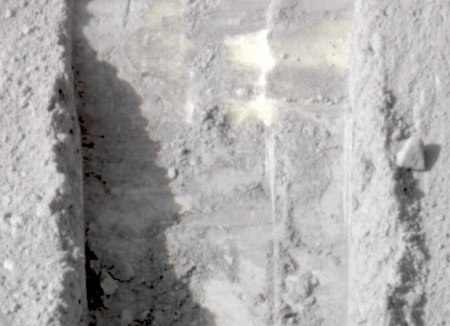
It’s official: the Phoenix Lander has discovered ice on Mars. A few days ago, the lander exposed some bright white chunks of material while retrieving a soil sample. These spots have since disappeared over the following days, suggesting they’ve melted. An additional trench found a hard layer at the same depth as the original ice.
The spacecraft team has been dealing with some data storage issues as well and will be pushing a software patch soon.















not melted, but sublimated. transformed straight from solid ice to gas.
Is the sunlight really hot enough to sublimate the ice? I guess so. Kinda interesting, I know C02 sublimates (dry ice), never thought about conditions on other planets.
Sublimation occurs due to the low pressure on Mars. as well. The atmospheric pressure on Mars is lower than the vapor pressure of the water trapped underneath the layers of Martian soil.
the lower atmospheric pressure on mars allows the ice to sublimate.
I just love it, they spend milions of dollars on this thing and all they can do is watch two pictures and GUESS?
great science there …
awesome! waited my whole life for this.
Water on Mars has also been photographed, like so: http://water-on-mars.istheshit.net/
How is this a Hack?
What makes any one think this isn’t already reported on EVERY OTHER NEWS SITE ON THE INTERNET?
/confused.
8 – A non-hack on hackaday?
these are clearly the end days. Stock your ammunition, tinned food and fuel.
Looks like we’ll be hacking solo from now on. :(
Ice on Mars. Cool. Ice on Mars on Hackaday. What’s the big deal? The “masses” doth protest too much, methinks.
You’d think they’d be testing for bacteria in the ice and soil, so they can say there’s life on Mars and get more funding to figure out how we can potentially go to war with it.
global warming on mars too? better send a hybrid probe next time
^ hahaha i like wht he said hahaha ^
@ louis ii:
How is this a hack?!? How can you be so shortsighted as not to see that it’s one of the best frackin’ hacks of all time? You might not have a maker’s soul, but mine is inspired by this!!!
How do we know it’s ice water? I think they are making quite a logical leap. Are there any substances that under the right condition don’t have a solid, liquid and gas state?
Re: the “This isn’t hacking”… Don’t you all think that the pheonix mission is a huge hack? I mean getting a robot rover on another planet, and having it dig to find “ice” and other interesting things?
i do not approve of this post.
not a hack. you can read this info on any associated press feed. also covered on my “new scientist” rss feed.
sure the remote vehicle itself is a hack, but there is nothing in the article about the build
>sure the remote vehicle itself is a hack
yes, but it was a hack on NASA funds. SO MUCH MONEY for a junk that can only send pictures …
>yes, but it was a hack on NASA funds. SO MUCH MONEY >for a junk that can only send pictures …
ok. it is a hack for nasa. the mission cost us$420 million, which is not a lot of money for them.
cost source – http://www.foxnews.com/story/0,2933,358027,00.html
rasz:
>yes, but it was a hack on NASA funds. SO MUCH MONEY >for a junk that can only send pictures
Well you hack together something and put it on Mars.
For all those people that think this doesn’t belong on hackaday, chill out. It’s geeky and cool. How much time did hackaday take from your day to scroll past this since you already know about it. < 1sec
I hope they don´´t say in a few days oh no it was our bad, we hadn´t took the right pictures.
Seriously, having put that thing so far away and put it working is amazing
Maybe the PI got caught with a bad quote, “It must be ice.” Naphthalene (primary ingredient in mothballs) is a white solid, that sublimates at room temperature at atmospheric pressure.
J A Streich: they know it’s not CO2 ice, because it’s far too hot for it to exist long enough to get a picture at that location and at those near-vacuum pressures. Think “ice cube on a frying pan”, without the liquid phase. The alternatives were water ice and salt deposits, and salt deposits don’t sublimate, at least not at those conditions.
Also, it’s not a rover, just a lander. The scientists are going to get to know that patch of ground *real* well by the time the place ices over and ends the mission…
rasz: Make some attempt to learn something about the mission before shooting your mouth off…the pictures are a tiny fraction of the science this mission does. There’s spectrometers, sample ovens, electrochemical cells, an atomic force microscope, a bunch of meteorological equipment…